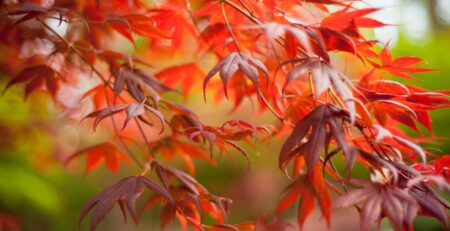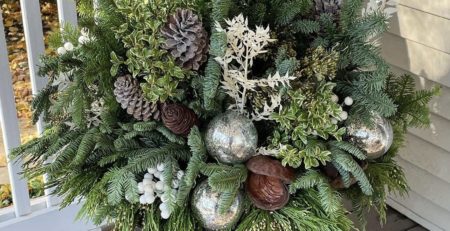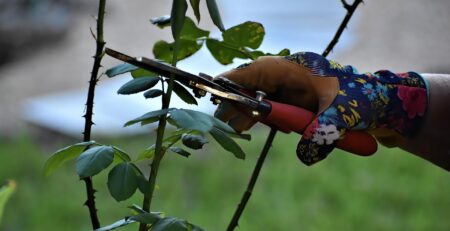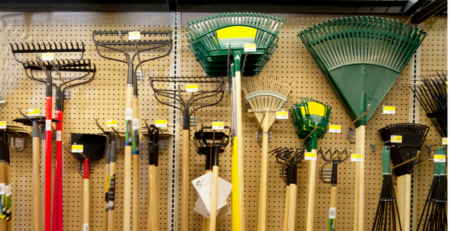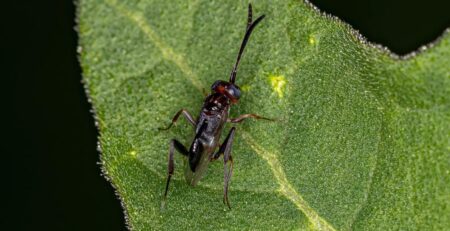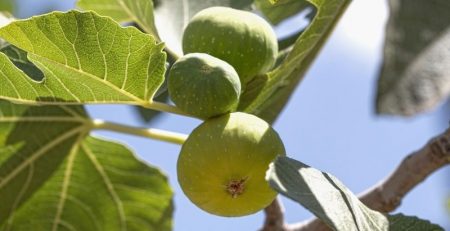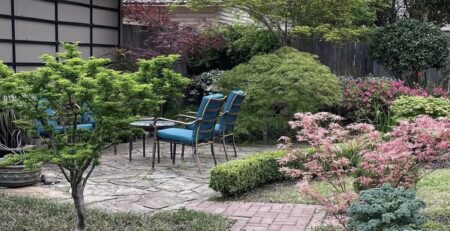Prune Like A Pro
Many gardeners find pruning an intimidating task. It’s difficult to know where to start cutting, how much to cut and when to stop. Is it necessary to prune at all? An understanding of the reasons we prune and knowledge of the plant’s response to pruning can help guide you through the process so that you end up with a healthy and attractive specimen.
What is pruning?
Simply put, pruning is the removal of unnecessary or undesirable parts of the plant. Pruning does not stop plant growth but in fact, stimulates more growth
Why prune?
The fundamental reasons for pruning are to train the plant, to maintain plant health, to improve the quality of flowers, fruit, foliage or stems, and to restrict growth.
When to prune?
Pruning at different seasons triggers different responses. Late winter or early spring, before bud break, is a good time to prune many species because new tissue forms rapidly. The energy stored in the roots and stems can be directed to forming new, vigorous growth. For trees and shrubs that bloom in the spring, delay pruning until after flowering or you risk removing this year’s buds. Dead, damaged or diseased wood can be pruned at any time.
NOTE: Oak wilt is a damaging disease of oak trees that is most easily spread during periods of mild weather. All wounding of oak trees should be avoided after February 1st. If there are immediate safety issues that need to be addressed, make as few pruning cuts as necessary and immediately paint all cuts with wound paint.
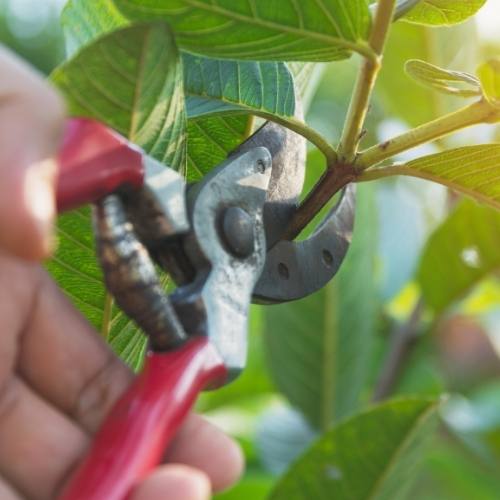
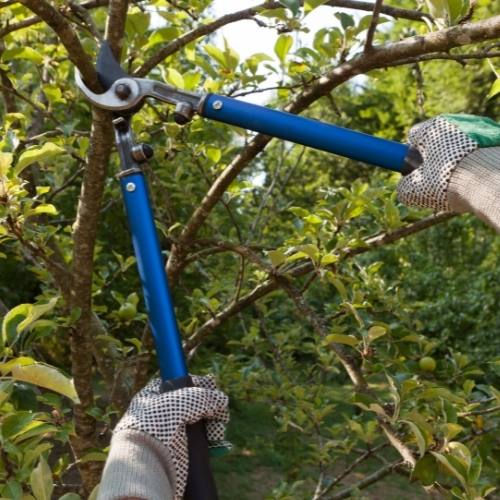

What pruning tools do I need?
Most pruning tasks can be accomplished with the use of three or four tools; pruning shears, lopping shears, hedge shears and a pruning saw. Hand pruners are designed for cutting stems up to 1/2 inch in diameter. Loppers can be used for branches up to 2 inches or more, depending on the toughness of the branch. Hedge shears can be used for creating formal shapes or cutting grasses and perennials. A pruning saw is useful for cutting larger branches that are too large for hand shears. When pruning diseased or insect infested wood, disinfect tools between each cut with products such as “Lysol,” “Listerine,” or rubbing alcohol. Tests have shown that bleach solutions can be highly corrosive to metal tools.
How do I prune?
Most gardeners prune in an attempt to reduce the height of the shrub or shape it in a particular manner. There are two methods that can accomplish this task. The first is to head back the selected branch to a preferred length. Heading a branch shortens it and stimulates new growth from the buds directly below the pruning cut. Heading a branch changes the direction in which it is growing and results in very bushy new growth below the cut. Remember, the bud you choose to prune back to will become a new branch so choose your cutting point accordingly.
A common pruning mistake is heading all branches back to the same height. This results in a top heavy, leggy shrub with an unnatural form. Heading should be used to fill in a gap in the canopy or to increase flower production in some shrubs. Heading of rose bushes is done to produce new, flowering wood in the spring. When making a heading cut, always prune back to a growing point, either an outward facing bud or pair of leaves. By cutting to an outside bud, the new shoots will not grow through the interior of the plants or crisscross.
The second method of pruning is the complete removal of one or more of the longest or tallest branches. This is termed “thinning.” In thinning out, a branch or twig is removed by cutting it back to its point of origin. The point of origin could be another branch or the main trunk, or it could be near the ground. The removal of an entire branch does not directly stimulate new growth, but it does open the shrub to allow more light to penetrate, which in turn will promote new growth toward the center of the shrub.
Thinning is the preferred method for controlling the size of most trees and shrubs; it creates a natural look and does not lead to excessive new growth. Make thinning cuts just above parent or side branches and roughly parallel to them. On trees, ensure that you don’t prune too close or too far from the branch collar to ensure proper wound healing.
Most shrubs can be pruned using the techniques described above. The growth habit of a plant has to be considered when pruning. Plants with a cane-like habit, such as a Nandina, should be pruned by
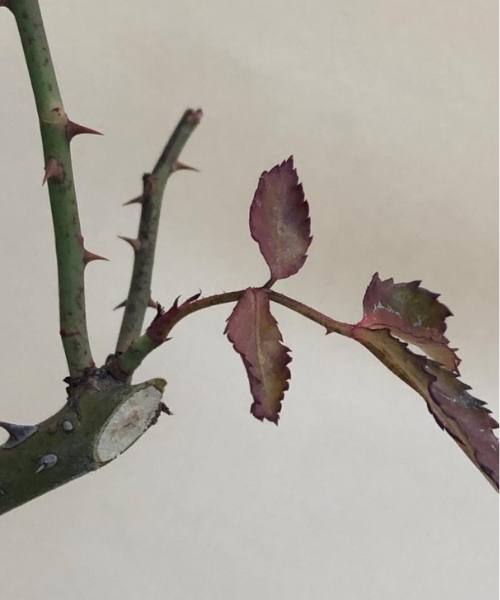
thinning the longest and most unsightly canes back to the ground level. Shrubs with a mounding habit should have the longest branches thinned back. Make the cut well below the canopy to hide the cut.
This method reduces mounding shrubs by up to one third their size without sacrificing their shape. For shrubs with a tree-like habit, remove any rubbing branches and prune to open the center of the shrub. Prune branches that touch the ground. Wait until the end of the job to make any heading cuts. Tree-like shrubs can usually tolerate removal of one-eighth to one-fourth of their branches. For all trees and shrubs, remove any dead, damaged or diseased limbs using one of the above mentioned pruning cuts.
Some plants, such as Abelia and some Spirea, bloom on one year old wood and get very tangled and twiggy if left unpruned. These shrubs can be cut to ground level annually, just as the buds are swelling.
Perennial plants can be pruned at this time as well. Cut dead growth back to the ground, being careful not to disturb any emerging new leaves. Woody perennials, such as Salvia Greggii, can be hard pruned to 6 to 8 inches. This hard pruning will invigorate the plant. Ornamental grasses can be cut down to ground level. You might need to rake out loose, dead and matted material from the center of large clumps.
Read more about pruning from research based sources:
Virgina (VCA): A Guide to Successful Pruning
Aggie Horticulture: Proper Pruning Techniques

Margaret Ghose has been a certified master gardener since 2017 and is a frequent contributor on the DCMG Facebook page. She enjoys growing perennials and native plants in her yard and is active in the Coppell community garden.


